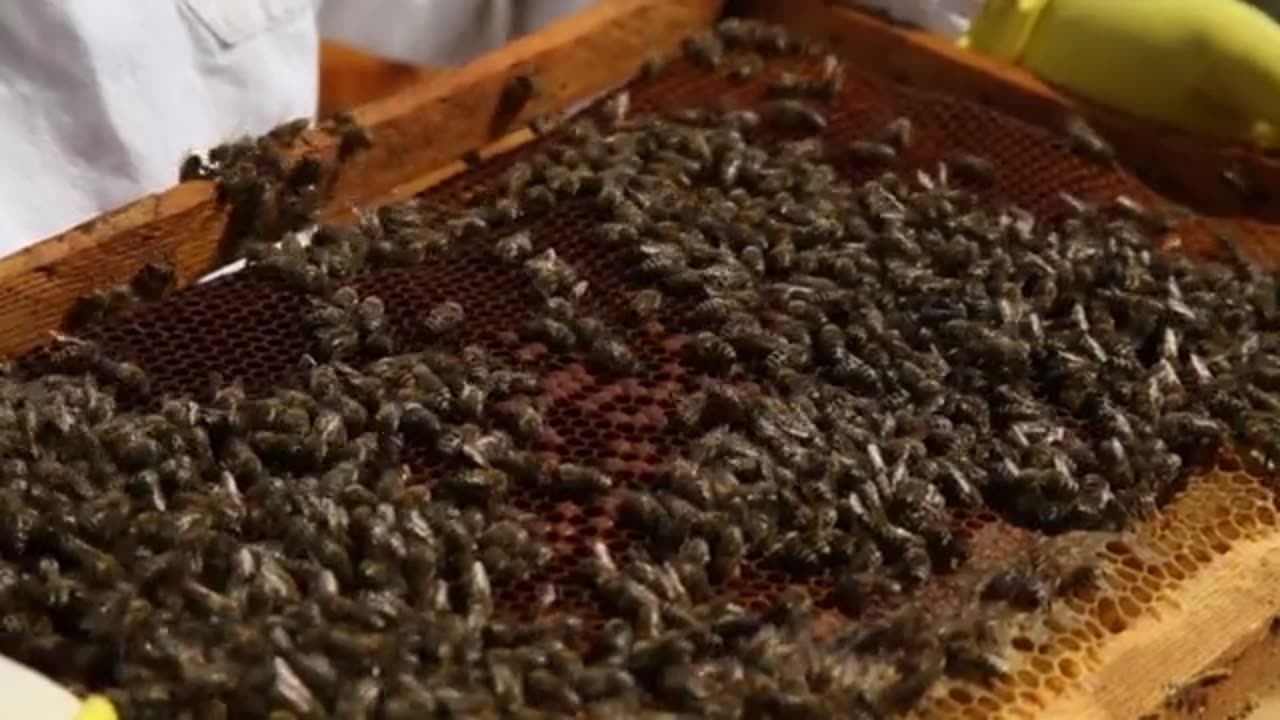Premium Only Content

Honey beekeeper bees
Beekeeping (or apiculture) is the maintenance of bee colonies, commonly in man-made beehives. Honey bees in the genus Apis are the most commonly kept species but other honey producing bees such as Melipona stingless bees are also kept. Beekeepers (or apiarists) keep bees to collect honey and other products of the hive: beeswax, propolis, bee pollen, and royal jelly. Other sources of beekeeping income include pollination of crops, raising queens, and production of package bees for sale. Bee hives are kept in an apiary or "bee yard".
The keeping of bees by humans, primarily for honey production, began around 10,000 years ago. A sample of 5,500-year-old honey was unearthed from the grave of a noblewoman during archaeological excavations in 2003 near the town of Borjomi, Georgia. Ceramic jars found in the grave contained several types of honey, including linden and flower honey. Domestication of bees can be seen in Egyptian art from around 4,500 years ago; there is also evidence of beekeeping in ancient China, Greece, and Maya.
In the modern era, beekeeping is often used for crop pollination and the collection of byproducts, such as wax and propolis. The largest beekeeping operations are agricultural businesses but many small beekeeping operations are run as a hobby. As beekeeping technology has advanced, beekeeping has become more accessible, and urban beekeeping was described as a growing trend as of 2016. Some studies have found city-kept bees are healthier than those in rural settings because there are fewer pesticides and greater biodiversity in cities.
Early history
At least 10,000 years ago, humans began to attempt to maintain colonies of wild bees in artificial hives made from hollow logs, wooden boxes, pottery vessels, and woven straw baskets known as skeps. Depictions of humans collecting honey from wild bees date to 10,000 years ago. Beekeeping in pottery vessels began about 9,000 years ago in North Africa. Traces of beeswax have been found in potsherds throughout the Middle East beginning about 7,000 BCE.[6] Domestication of bees is shown in Egyptian art from around 4,500 years ago.[7] Simple hives and smoke were used, and honey was stored in jars, some of which were found in the tombs of pharaohs such as Tutankhamun. In the 18th century, European understanding of the colonies and biology of bees allowed the construction of the movable comb hive so honey could be harvested without destroying the entire colony.
Honeybees were kept in Egypt from antiquity. On the walls of the sun temple of Nyuserre Ini from the Fifth Dynasty before 2,422 BCE, workers are depicted blowing smoke into hives as they remove honeycombs. Inscriptions detailing the production of honey are found on the tomb of Pabasa from the Twenty-sixth Dynasty c. 650 BCE, in which cylindrical hives are depicted along with people pouring honey into jars
-
 1:11:26
1:11:26
Coin Stories with Natalie Brunell
20 hours agoBRICS Nations Hold the Leverage (and Gold) and Why Bitcoin Price Isn’t Higher with Luke Gromen
29.4K2 -
 30:29
30:29
DeVory Darkins
1 day ago $4.42 earnedtroubling FBI report details the shooter left chilling note as more Democrats suffer humiliation
8.33K87 -
 1:50:29
1:50:29
Tucker Carlson
7 hours agoTucker Carlson LIVE: America After Charlie Kirk
352K307 -
 2:12:05
2:12:05
FreshandFit
7 hours agoIf She Can Do Better She Will Leave You
38.9K12 -
 2:14:00
2:14:00
Inverted World Live
9 hours agoLegion of Zoom | Ep. 109
207K12 -
 2:42:57
2:42:57
TimcastIRL
10 hours agoDOJ Releases Charlie Kirk Assassin Messages, Trans Left Aligned Confirmed | Timcast IRL
356K220 -
 1:09:13
1:09:13
Man in America
13 hours agoSICK: Xi & Putin Caught Plotting Organ Transplants for “Eternal Life”
92.9K34 -
 6:04:35
6:04:35
Drew Hernandez
14 hours agoMASS CONFUSION AROUND CHARLIE'S MURDER
68K54 -
 1:01:40
1:01:40
HotZone
6 days ago $14.06 earned"Prepare for WAR" - Confronting the URGENT Threat to America
91.1K29 -
 20:23
20:23
Scammer Payback
15 hours agoTerrifying Scammers with File Deletions
53.6K14